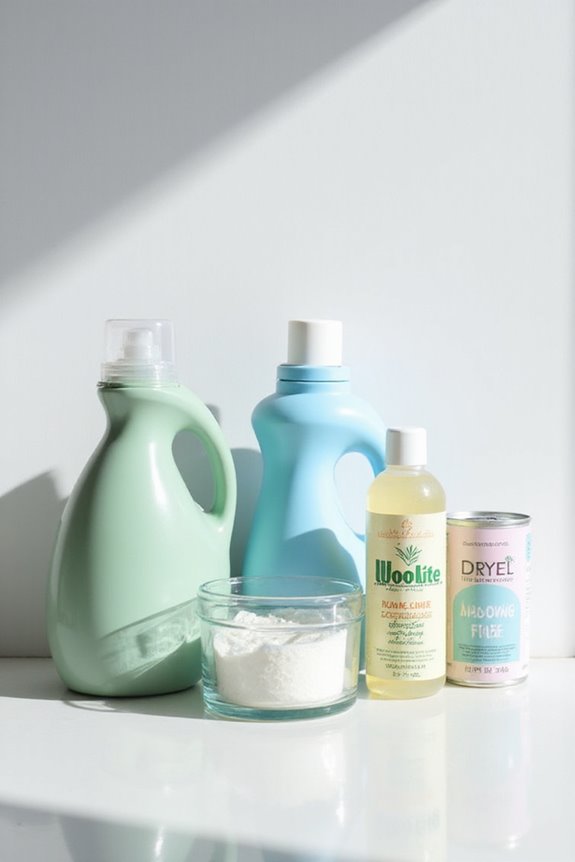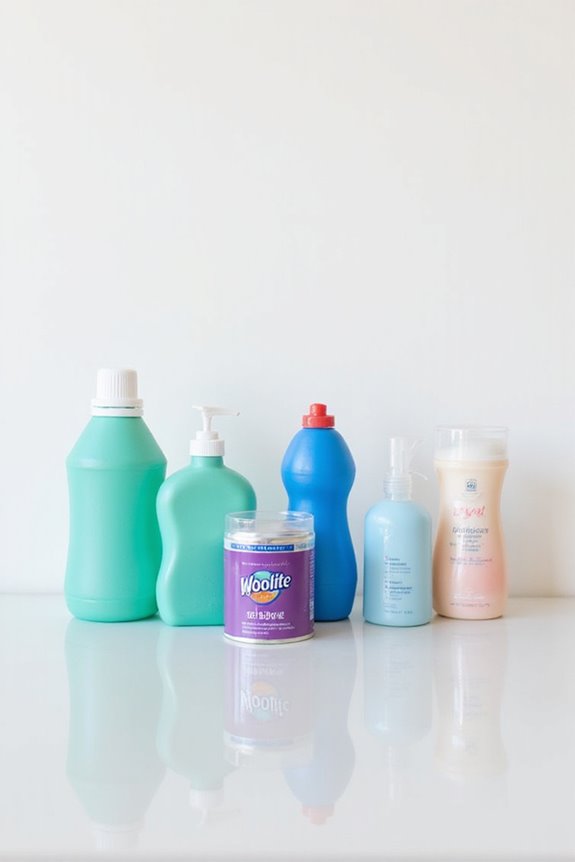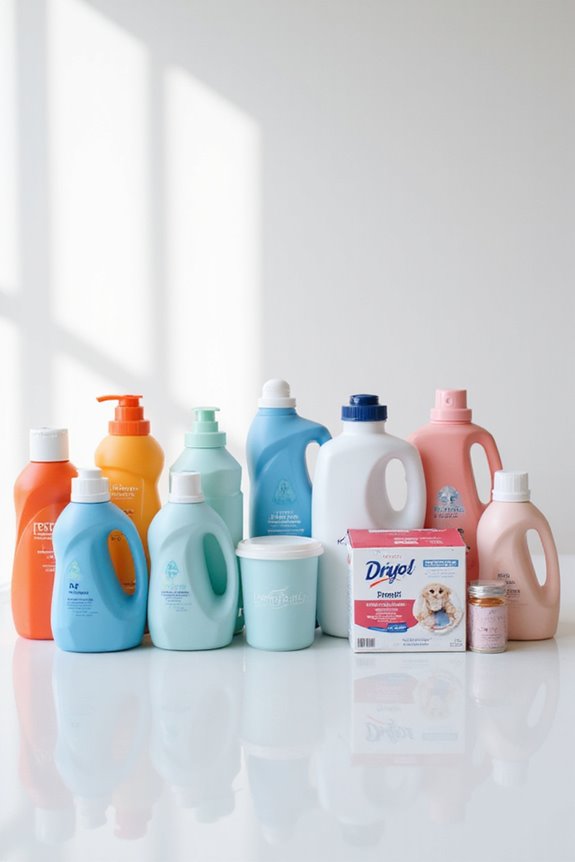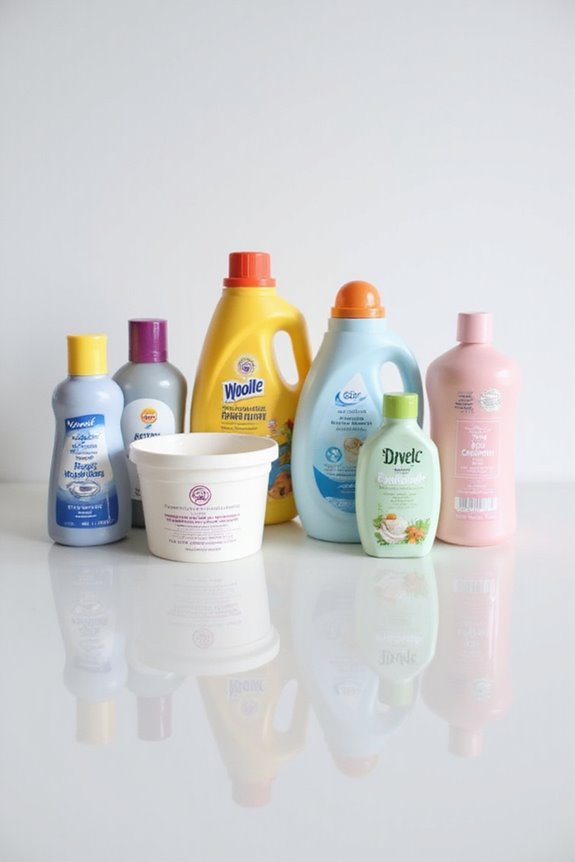To prevent mildew in our laundry room, we should install ventilation systems like Energy Recovery Ventilators (ERVs) that exchange stale air with fresh air. Using dehumidifiers helps keep humidity around 40-50%, which really cuts down drying time. Also, moisture barriers are a great idea to stop leaks. We can use exhaust fans during laundry to clear out humid air quickly. If we stay on top of cleaning our machines, we’ll keep mildew away too. There’s even more to explore!
Key Takeaways
- Install Energy Recovery Ventilators (ERVs) to exchange humid air with fresh outdoor air, reducing moisture levels.
- Utilize exhaust fans during and after laundry tasks to eliminate excess humidity quickly.
- Keep humidity levels between 40-50% using dehumidifiers to prevent mold growth.
- Maintain regular cleaning routines and inspect appliances for leaks to minimize moisture accumulation.
- Use moisture barriers behind drywall and breathable materials to prevent leaks and moisture retention.
Effective Ventilation Strategies
Have you ever wondered how to keep your laundry room mildew-free? One effective way is through proper ventilation strategies. Installing ventilation systems, like Energy Recovery Ventilators (ERVs), can really help. They exchange that hot, humid air inside with fresher outdoor air, which is essential for preventing mildew. Plus, they reduce nasty airborne contaminants.
We should also consider exhaust fans. Running them during laundry tasks and for a few minutes afterward clears out leftover humidity. Just remember, they need to vent directly outdoors, not into attics or crawl spaces.
Utilizing Humidity Monitoring Technologies
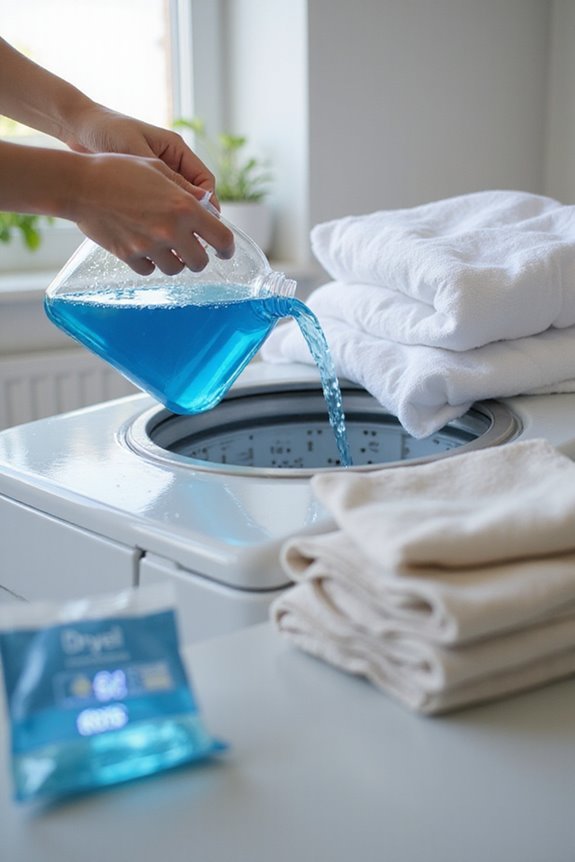
How can we keep our laundry room free from mildew while making our lives a bit easier? By utilizing humidity sensors and monitoring systems, we can take control of our space. These smart devices track humidity levels in real-time, sending alerts when things get too damp. Imagine getting a ping on your phone instead of discovering mold later! Some systems even activate ventilation fans automatically, saving energy and keeping our laundry room fresh.
Plus, many sensors record historical data, helping us optimize ventilation when needed. We’re not just fighting mildew; we’re making laundry day smoother! With these tools, we can guarantee our laundry room stays dry and efficient, letting us focus on more important things—like finally folding that stack of clothes!
The Importance of Dehumidifiers
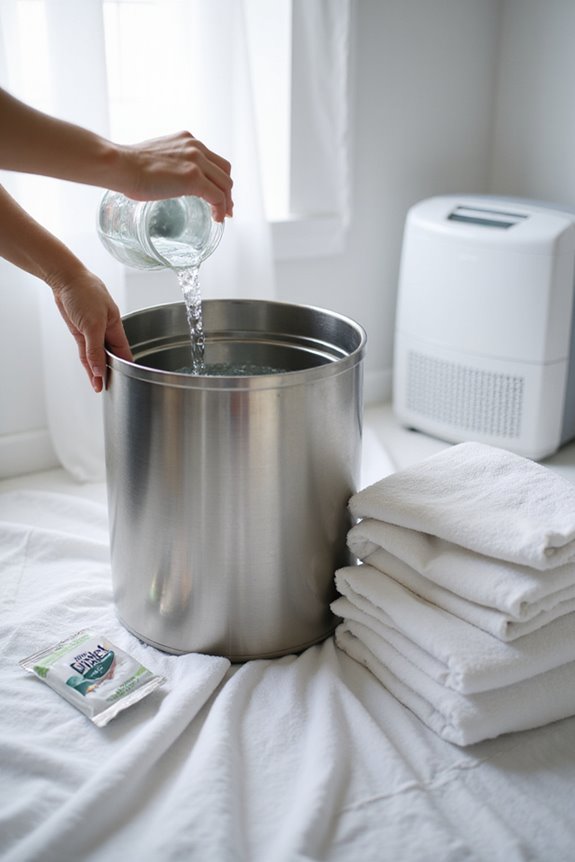
When we think about keeping our laundry room dry and free from mildew, dehumidifiers often come to mind. These handy devices offer great dehumidifier benefits, especially by reducing humidity levels. By keeping humidity around 40-50%, we can prevent mold and mildew from taking over. Plus, they considerably cut down drying times—from 24-48 hours to just 4-6 hours!
Not to mention, they’re energy efficient. They consume less energy than traditional dryers, saving us money on electricity. By placing a dehumidifier in a smaller space, we maximize its effectiveness. So, whether we’re tackling damp laundry or musty odors, a dehumidifier is a practical solution that keeps our laundry room fresh and inviting! Additionally, using eco-friendly options like detergent can further help in combating mildew odors in your laundry.
Moisture Reduction Techniques
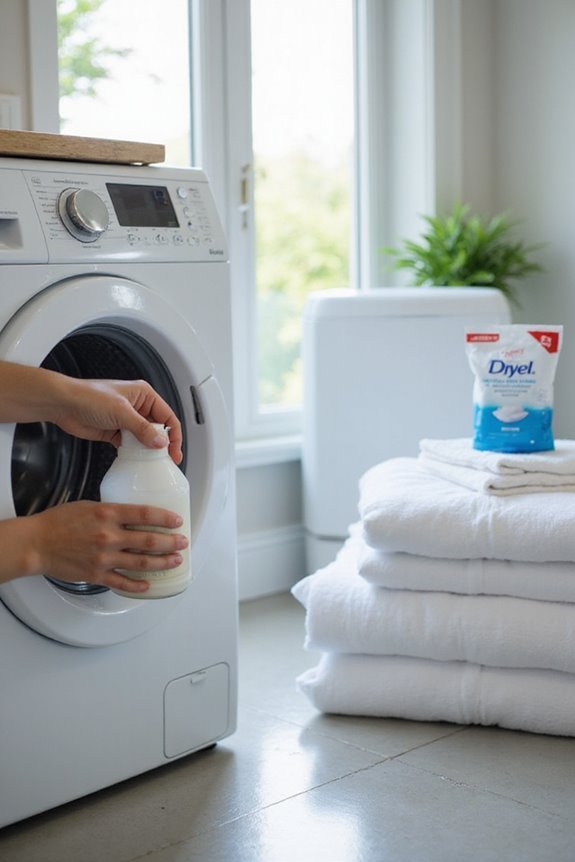
After setting up our dehumidifier to tackle moisture, it’s time to explore other moisture reduction techniques that can keep our laundry room dry and mildew-free. First, let’s install an exhaust fan to whisk away humid air during laundry cycles. We should also vent our dryer directly outdoors—no more trapped hot, moist air! Opening windows when possible adds fresh air too.
Next, we can use moisture barriers behind drywall to prevent leaks. Choosing breathable materials like ceramic tile or vinyl plank can help, too. Let’s avoid closed cabinets; open shelving allows better air circulation. Finally, placing absorbent rugs can catch drips before they turn into a mini swimming pool. With these steps, we’ll banish mildew for good!
Maintenance and Cleaning Practices
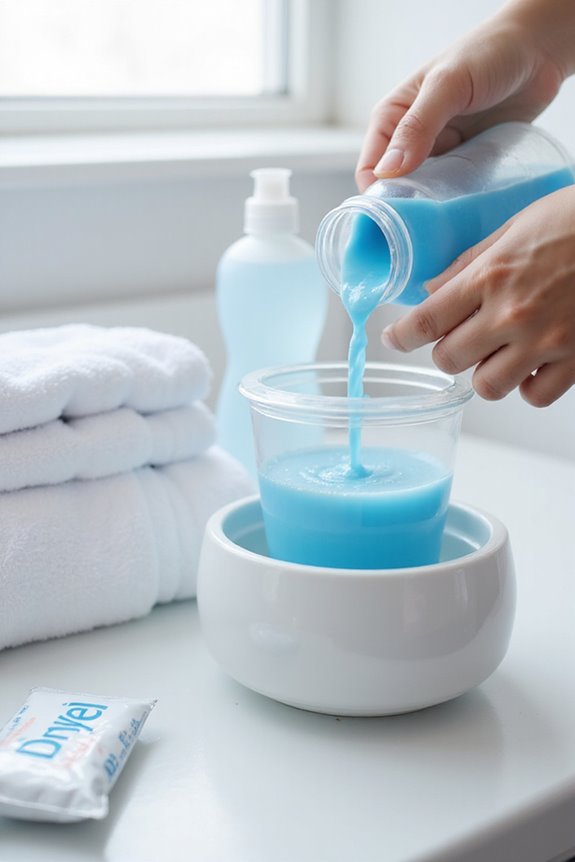
Keeping our laundry room clean and well-maintained is essential in the fight against mildew. We can start by establishing regular cleaning routines. Monthly, we should clean the washing machine’s gasket and seals to prevent mold buildup. Running a cleaning cycle with vinegar or baking soda is a great idea too! Let’s not forget to inspect our appliances regularly. Checking hoses for leaks and ensuring dryer vents are clear helps keep excess moisture at bay. And when we do laundry, drying clothes immediately is key. If we can avoid leaving damp clothes sitting around, we’ll reduce the risk of mildew. By sticking to these practices, we can maintain a fresh and mildew-free laundry environment. Additionally, using a washer odor cleaner like Tide Washing Machine Cleaner can help eliminate odors and keep our machines in top condition.
Structural and Design Considerations
Maintaining a clean laundry room is just the start; how we design the space matters too. Using mold-resistant structural materials, like green board drywall and ceramic tile flooring, can really help us combat mildew. These materials resist moisture better than traditional options, making our laundry rooms safer.
In our design layout, we should guarantee proper ventilation. Exhaust fans are a great addition, as they kick out warm, moist air. Plus, placing washers away from exterior walls can minimize condensation issues.
Let’s also consider adding floor drains to manage spills. Trust us, this can save us from future headaches! By being mindful of these design choices, we can create a laundry room that’s not just functional but mildew-free too.
Smart Home Integration for Humidity Control
When it comes to keeping our laundry room mildew-free, smart home integration can be a game changer. With smart sensors, we can monitor humidity in real-time. These nifty devices alert us when moisture levels get too high, helping us prevent mildew before it starts. Imagine receiving a notification on our phones while we’re out—talk about peace of mind!
Plus, automated management means our exhaust fans or dehumidifiers kick in automatically when humidity spikes. We don’t even have to lift a finger. We can set routines, like running a dehumidifier only after laundry cycles. It’s like having a personal assistant for our laundry room! Overall, smart home integration simplifies our moisture control, making our lives easier and our homes healthier.
Frequently Asked Questions
How Often Should I Clean My Laundry Appliances?
Just like we schedule regular car maintenance, we should set a cleaning schedule for our laundry appliances. Monthly checks and cleanings guarantee efficient operation and prolong their lifespan, keeping our laundry fresh and mold-free.
What Are Signs of Mold in Laundry Rooms?
We should watch for mold symptoms like musty odors, discoloration, and respiratory issues in our laundry rooms. Identifying these signs early can help us take steps for mildew prevention and guarantee a healthier environment.
Can I Use Essential Oils to Combat Mildew?
Sure, we could just ignore mildew, right? But why not embrace essential oil benefits for mildew prevention instead? Lavender and tea tree oils are our go-to solutions, fighting odors while keeping our laundry fresh and clean!
What Temperature Should I Wash Clothes to Prevent Mildew?
When we’re choosing a wash cycle, we should aim for higher water temperatures—around 60°C or more—to effectively combat mildew. This helps guarantee our clothes stay fresh and free from unwanted bacteria and odors.
How Can I Tell if My Laundry Room Is Too Humid?
To tell if our laundry room’s too humid, we should check humidity levels regularly. We’ll look for moisture sources like condensation, musty odors, and damp spots, which indicate excessive humidity that could lead to mildew.




